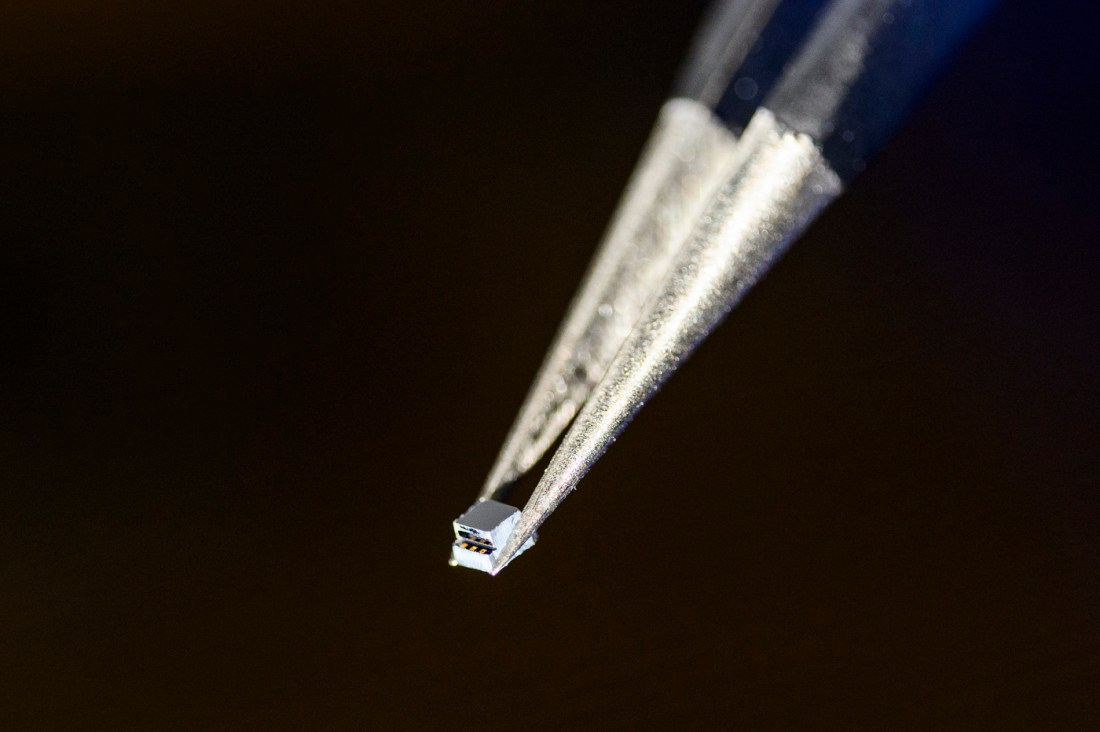These ‘zero-power’ sensors could revolutionize consumer electronics
Instead of relying on electricity, Zepsor Technologies’ sensors take advantage of infrared radiation — or heat — for power.

Battery life on devices ranging from smart displays to smart watches could be greatly extended thanks to innovative “zero-powered” sensors being developed at Zepsor Technologies, a Northeastern University spinout company.
For the past few years, the company has worked to refine the technology, working closely with chip foundries to work out kinks and imperfections.
In the next 12 months, the developers plan to ship prototypes of their sensors to potential customers, a major step in commercializing the technology for consumers.
Here’s how the technology works.
Have you ever walked into a room, noticed the overhead lights turned on automatically, and wondered how that just happened?
More likely than not, those lights were triggered using motion-activated sensors. They are relatively low-powered and cheap to produce, yet they have a flaw — they consume power even in standby mode.

Instead of relying on electricity, Zepsor’s sensors take advantage of infrared radiation — or heat — emitted from our bodies for power, explains Zhenyun Qian, a Northeastern University professor of electrical and computer engineering and the company’s chief technology officer.
“Our sensors are ‘off-but-alert’ as they do not drain any battery power to continuously monitor the environment but are still capable of detecting and discriminating against the IR radiation emitted by a human body or other IR-emitting objects,” says Qian.
That thermal energy is then harnessed to close a micromechanical switch integrated into the sensor, triggering a response — for example, a light switch turning off or a dispenser distributing a small amount of soap.
Qian and his colleagues, including Northeastern professor Matteo Rinaldi, developed this technology at Northeastern’s Sensors and Nano Systems lab after receiving funding from the U.S. Defense Advanced Research Project Agency, or DARPA, in 2015.
“They ordered researchers to do research in the domain of extremely low-power or near-zero powered sensors because for a lot of military applications changing batteries is simply impossible because sensors are hidden,” he says. “Sometimes they put sensors on the battlefield.”
Qian and his team already had experience working with extremely low-power sensing technology and micro electrical mechanical systems. It didn’t take them long to develop their zero-power solution, which takes advantage of longwave infrared to function.
“One important aspect of the technology is its spectral selectivity,” says Qian. “We integrated a tiny absorber enabled by nanotechnology in our sensor to harvest only certain band(s) of IR radiation and we can change the target band easily by design.”
“This is important because different warm [entities] emit different wavelengths of IR (e.g. human body, fire, exhaust plume soldering iron, sun, etc.) and our sensor can differentiate them through their spectral signature without using electrical power,” he adds.





Qian lays out one scenario: While today’s soap dispensers typically last about a few months before their batteries need to be replaced, a soap dispenser using Zepsor’s sensors could last upwards of five years between charges, he says.
While the company is still far away from commercialization, it’s hopeful that it will get there in the next few years, Qian says. Northeastern, he says, has been helpful in supporting those efforts.
As a Northeastern spin out, Zepsor still takes advantage of many university resources, including its facilities and research talent, he says.
“It’s a successful model for researchers and scholars to pursue a commercialization path,” he says.






